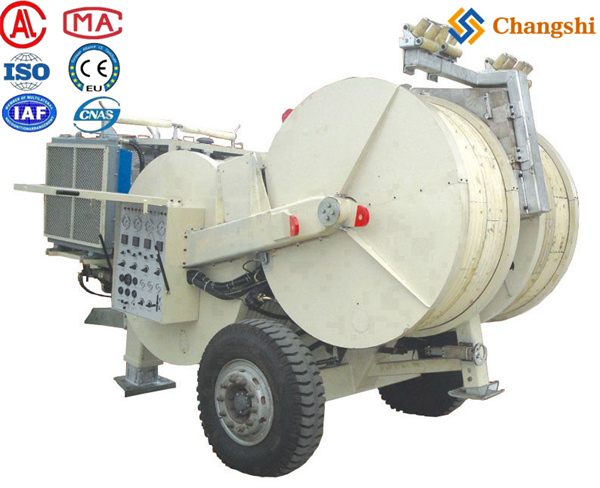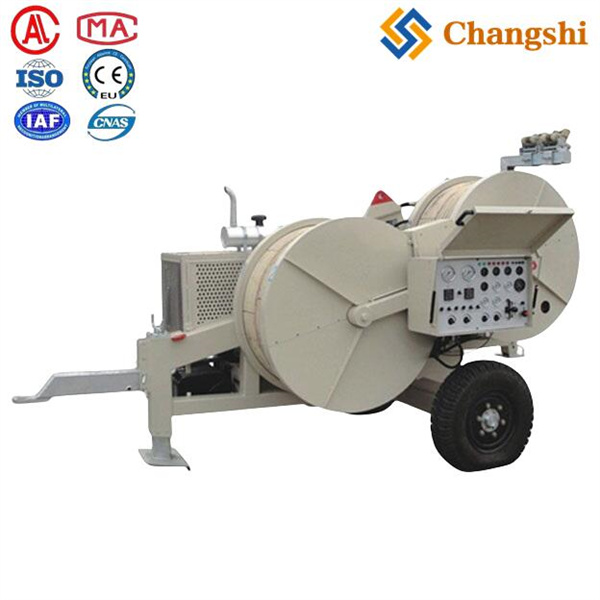
Constant Tension Control Systems (CTCS)
Constant Tension Control Systems (CTCS) are a crucial feature in modern power line stringing and heavy cable installation equipment. They represent a significant leap from older, manual tensioning methods, offering enhanced safety, precision, and efficiency.
What is a Constant Tension Control System (CTCS)?
A CTCS is an automated or semi-automated system integrated into hydraulic pullers and tensioners (or even specialized tension control units). Its primary function is to monitor and precisely maintain a pre-set pulling force (on a puller) or braking force (on a tensioner) on the wire or cable, regardless of changes in line speed, friction, or external conditions.
Think of it like cruise control for a car, but instead of maintaining speed, it maintains tension.
How CTCS Works (Simplified):
Sensors (Load Cells/Dynamometers): The system uses highly accurate load cells (often integrated into the bullwheel axles or guide sheaves) to continuously measure the actual tension on the conductor/cable in real-time.
Controller (PLC/Microprocessor): This is the "brain" of the system. It receives the tension data from the sensors and compares it to the desired tension set by the operator.
Hydraulic/Electric Actuators: If there's a deviation from the set tension, the controller sends signals to the machine's hydraulic pumps, motors, or electric drives.
On a puller: If tension drops, the pump/motor might speed up; if it rises, it might slow down.
On a tensioner: If tension drops, the hydraulic brakes might increase resistance; if it rises, resistance might decrease.
Feedback Loop: This process creates a continuous feedback loop, constantly adjusting the machine's operation to maintain the constant tension, making hundreds or thousands of micro-adjustments per second.
Benefits of Constant Tension Control Systems:
Prevents Cable/Conductor Damage: This is the most significant benefit. Excessive tension can stretch conductors, damage insulation, or break strands, leading to premature failure. Insufficient tension can cause the cable to sag, drag, or tangle. CTCS ensures the cable is always within its safe working limits.
Enhanced Safety: By keeping the conductor off the ground and under controlled tension, the risk of accidental contact with people, vehicles, or equipment is dramatically reduced. It also prevents "snap-back" hazards from sudden tension release.
Optimal Sag and Clearance: Precise tension control ensures that the conductor is strung to the exact sag profile specified by engineers. This is critical for maintaining proper clearances from ground, structures, and other lines, which affects the line's electrical performance and safety.
Improved Installation Quality: Consistent tension leads to a smoother, more uniform installation, reducing the likelihood of wrinkles, kinks, or uneven lay.
Increased Efficiency and Speed: Automation reduces the need for constant manual adjustments, allowing operations to proceed more smoothly and often faster.
Reduced Human Error: Minimizes the impact of operator fatigue or inconsistencies, leading to more reliable and consistent pulls/tensioning.
Data Logging and Documentation: Most CTCS are integrated with data logging capabilities, recording tension, speed, and distance over time. This data is invaluable for project documentation, quality assurance, troubleshooting, and future planning.
Synchronization for Bundled Conductors: For multi-bullwheel tensioners, CTCS is essential for ensuring that each individual sub-conductor in a bundle is tensioned equally and synchronously, preventing twisting and ensuring bundle integrity.
Reduced Wear and Tear: By preventing sudden shocks or overloads, CTCS can prolong the lifespan of the stringing equipment itself.


